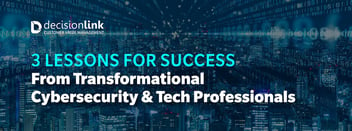The New Reality of Go-to-Market Transformations

Traditional sales and marketing are becoming obsolete. What a bold statement! It is not one of mine. It is a statement borrowed from the latest blog on HBR.org [1]. With the disappearing sales process and the digitalization of go-to-market activities, there is a new reality as follows:
“For many sales leaders, that dramatically small window of direct interaction represents the single biggest challenge their sales teams face today, an overall lack of access — and therefore lack of opportunity — to materially impact purchase deliberations and bend customer preference toward their company’s unique offering.” [2]
In previous posts, I explained the impact of digitalization on all sales functions. I touched on roles, processes, and skills to develop to successfully conduct successful transformations. We need to elevate the discussion and focus much more on transformational leadership, culture, and the strategic imperative. Ask marketing, value, pricing, and commercial professionals what is missing to drive transformations faster and you will usually get responses around leadership, culture, and strategy. Below, I am listing eight factors that can make or break go-to-market transformations. Let us get started!
- Digitalization is just accelerating the need to transform marketing, sales, and pricing. Speed is the new currency of business. Huge investments in digital tools and systems provide a boost to business cycles and accelerate the need to go faster in pricing and commercial transformations. That includes speed in design, speed in execution, speed in technological deployment, and speed in mindset disruption. What used to take 10 years now needs to be done within 2-5 years.
- You cannot transform marketing and pricing without sales and vice versa. The interdependencies between marketing, sales, and pricing increase because of systems such as CRM, CPQ, sales and marketing automation, and business intelligence platforms. If you implement a pricing transformation, you will for sure modify your commercial policies and processes. If you transform your commercial approach to inject a boost in productivity, you will use CRM or CPQ and therefore will have to get pricing taken care of. All of them are joined at the hip.
- Pay attention to your current position in go-to-market maturity: an organization with different marketing, sales, and pricing maturity will have to play catch up somehow. Maturity assessments are an effective way to get started and can be used to design your change roadmap. Vendavo recently developed a commercial maturity assessment which is a great resource to start the conversation [3].
- Make sure your go-to-market transformation fits in the grand scheme of things. Someone needs to pay attention to the rest of the transformation workload, such as product, engineering, and customer success. Most organizations will conduct multiple transformations at once. That really drains the energy and resources of the organization. That also creates potential duplications. Check with your transformation office if you are lucky to have one. Piggyback on other transformational projects. Borrow process documents shamelessly!
- Implementing transformations on top of a broken business model is challenging work and a difficult issue to resolve. Doing transformational work when business conditions are good is demanding work. Why change when we are doing well? Doing the same work when business conditions are tough, and the business model is suffering is impossible. There is usually no budget or headcount to do the work. Cost-cutting is typically the number one priority in that situation. You will need to create a storyline for top management to explain “why now.”
- Whatever the transformation, leadership support is key. Nothing happens without the C-suite. You read this over and over. Yet, it is hard to get their attention. When the business is doing well, they want more growth and innovation. When business is tough, they want cost reduction and cash flow protection. It takes a special breed of leaders to give time, resources, and political influence on the types of transformation we are discussing here. The role of the CRO and CEO are key in aligning all transformations to reach proper scaling speed.
- A cross-functional approach is essential. Nothing happens without strong alignment. Not only do you need functional alignment, but you need cultural, hierarchical, and geographical alignment. To get there, you design your work with cross-functionality in mind. That means a lot more travel expenses and resources for cross-functional activities like workshops, training, simulations, problem-solving sessions, blueprinting sessions, etc.
- ROI, ROI, and ROI – in the end, success breeds investments and more success. You cannot make your transformational roadmap too theoretical or too fuzzy. You need to apply a strong discipline of calculating and promoting ROI for all your transformation bricks. That is the only way to get attention from the C-suite and to secure the next wave of investments for pricing and commercial programs.
Transformation change is both a design and execution challenge. You need to be a great designer to develop a strong roadmap. Transformational skills are a competitive advantage in the age of digitalization. So, ask yourself these questions: who designed your marketing, sales, and pricing transformations? Who oversees ensuring that your go-to-market programs have evolved with trends and technologies? What is the grand plan for all transformation work? Are you making a strong monetary impact to the organization?
Bio

Dr. Stephan Liozu (www.stephanliozu.com) is the Founder of Value Innoruption Advisors (www.valueinnoruption.com), a consulting boutique specializing in industrial pricing, digital business, and value models, and value-based pricing. Stephan has 30 years of experience in the industrial and manufacturing sectors with companies like Owens Corning, Saint-Gobain, Freudenberg, and Thales. He holds a Ph.D. In Management from Case Western Reserve University, and has authored several books, including his latest book, The Industrial Subscription Economy (2022). Stephan is a strategic advisor to DecisionLink and Monetize360, as well as a senior advisor at BCG.
[1] Traditional B2B Sales and Marketing Are Becoming Obsolete (hbr.org)
[2] Traditional B2B Sales and Marketing Are Becoming Obsolete (hbr.org)

 ValueCloud
ValueCloud
.png?width=118&height=76&name=Rectangle%20(3).png) ValueCloud Ignite
ValueCloud Ignite
.png?width=92&height=92&name=Rectangle%20(4).png) Free Assessment
Free Assessment
.png?width=100&height=100&name=Rectangle%20(5).png) Watch a Demo
Watch a Demo
.png?width=82&height=96&name=Rectangle%20(6).png) Value Calculator
Value Calculator

.png?width=62&height=51&name=Group%2010%20(1).png) Marketing
Marketing
 Sales
Sales
 Customer Success
Customer Success
 Engage Prospects
Engage Prospects
 Win Deals Faster
Win Deals Faster
 Retain Customers
Retain Customers
.png?width=62&height=62&name=Rectangle%20(8).png) Adopt and Scale
Adopt and Scale
.png?width=54&height=54&name=Rectangle%20(9).png) Cybersecurity
Cybersecurity
 Healthcare
Healthcare
.png?width=54&height=54&name=Rectangle%20(10).png) IT & Software
IT & Software



